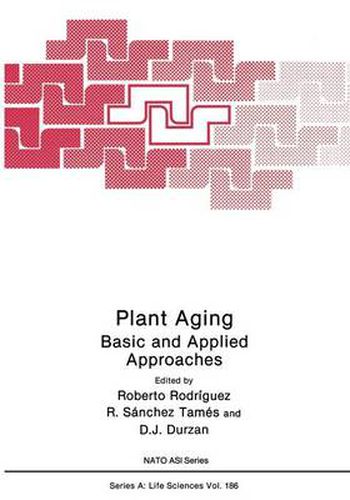Readings Newsletter
Become a Readings Member to make your shopping experience even easier.
Sign in or sign up for free!
You’re not far away from qualifying for FREE standard shipping within Australia
You’ve qualified for FREE standard shipping within Australia
The cart is loading…






This title is printed to order. This book may have been self-published. If so, we cannot guarantee the quality of the content. In the main most books will have gone through the editing process however some may not. We therefore suggest that you be aware of this before ordering this book. If in doubt check either the author or publisher’s details as we are unable to accept any returns unless they are faulty. Please contact us if you have any questions.
For many, the terms aging, maturation and senescence are synonymous and used interchangeably, but they should not be. Whereas senescence represents an endogenously controlled degenerative programme leading to plant or organ death, genetiC aging encompasses a wide array of passive degenerative genetiC processes driven primarily by exogenous factors (Leopold, 1975). Aging is therefore considered a consequence of genetiC lesions that accumulate over time, but by themselves do not necessarily cause death. These lesions are probably made more severe by the increase in size and complexity in trees and their attendant physiology. Thus while the withering of flower petals following pollination can be considered senescence, the loss of viability of stored seeds more clearly represents aging (Norden, 1988). The very recent book Senescence and Aging in Plants does not discuss trees, the most dominant group of plants on the earth. Yet both angiospermic and gymnospermic trees also undergo the above phenomena but less is known about them. Do woody plants senesce or do they just age? What is phase change? Is this synonymous with maturation? While it is now becoming recognized that there is no programmed senescence in trees, senescence of their parts, even in gymnosperms (e. g. , needles of temperate conifers las t an average of 3. 5 years), is common; but aging is a readily acknowledged phenomenon. In theory, at least, in the absence of any programmed senescence trees should -live forever, but in practice they do not.
$9.00 standard shipping within Australia
FREE standard shipping within Australia for orders over $100.00
Express & International shipping calculated at checkout
Stock availability can be subject to change without notice. We recommend calling the shop or contacting our online team to check availability of low stock items. Please see our Shopping Online page for more details.
This title is printed to order. This book may have been self-published. If so, we cannot guarantee the quality of the content. In the main most books will have gone through the editing process however some may not. We therefore suggest that you be aware of this before ordering this book. If in doubt check either the author or publisher’s details as we are unable to accept any returns unless they are faulty. Please contact us if you have any questions.
For many, the terms aging, maturation and senescence are synonymous and used interchangeably, but they should not be. Whereas senescence represents an endogenously controlled degenerative programme leading to plant or organ death, genetiC aging encompasses a wide array of passive degenerative genetiC processes driven primarily by exogenous factors (Leopold, 1975). Aging is therefore considered a consequence of genetiC lesions that accumulate over time, but by themselves do not necessarily cause death. These lesions are probably made more severe by the increase in size and complexity in trees and their attendant physiology. Thus while the withering of flower petals following pollination can be considered senescence, the loss of viability of stored seeds more clearly represents aging (Norden, 1988). The very recent book Senescence and Aging in Plants does not discuss trees, the most dominant group of plants on the earth. Yet both angiospermic and gymnospermic trees also undergo the above phenomena but less is known about them. Do woody plants senesce or do they just age? What is phase change? Is this synonymous with maturation? While it is now becoming recognized that there is no programmed senescence in trees, senescence of their parts, even in gymnosperms (e. g. , needles of temperate conifers las t an average of 3. 5 years), is common; but aging is a readily acknowledged phenomenon. In theory, at least, in the absence of any programmed senescence trees should -live forever, but in practice they do not.